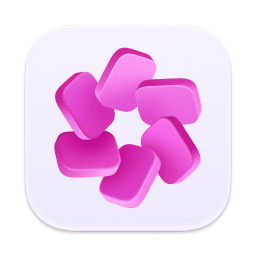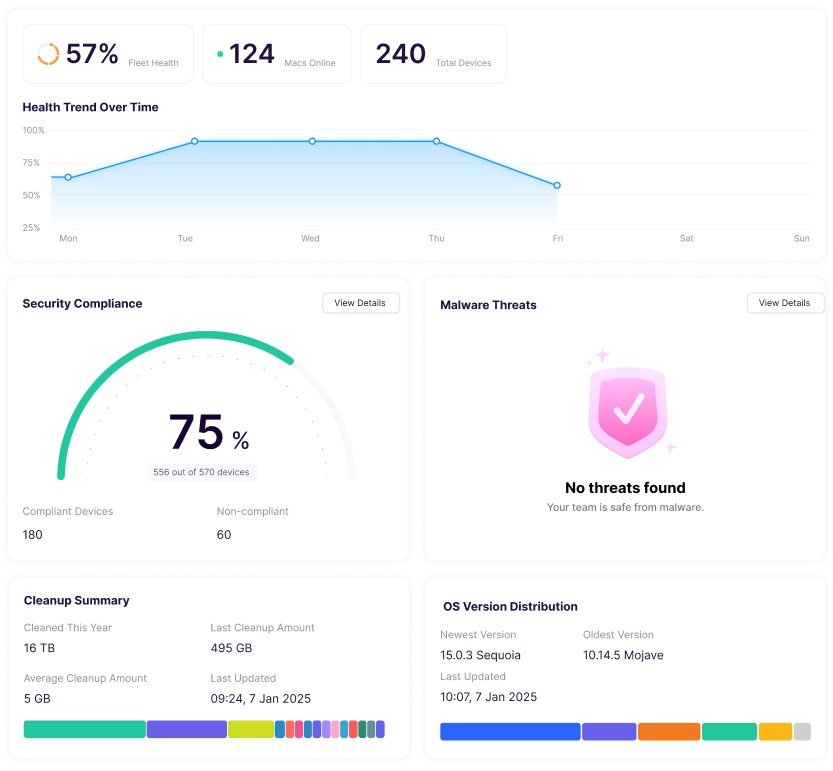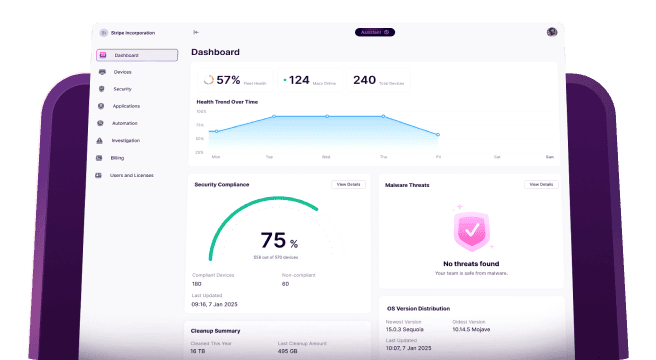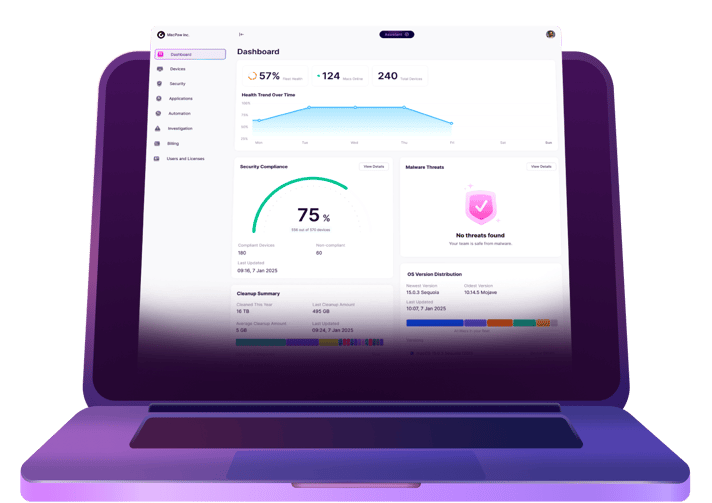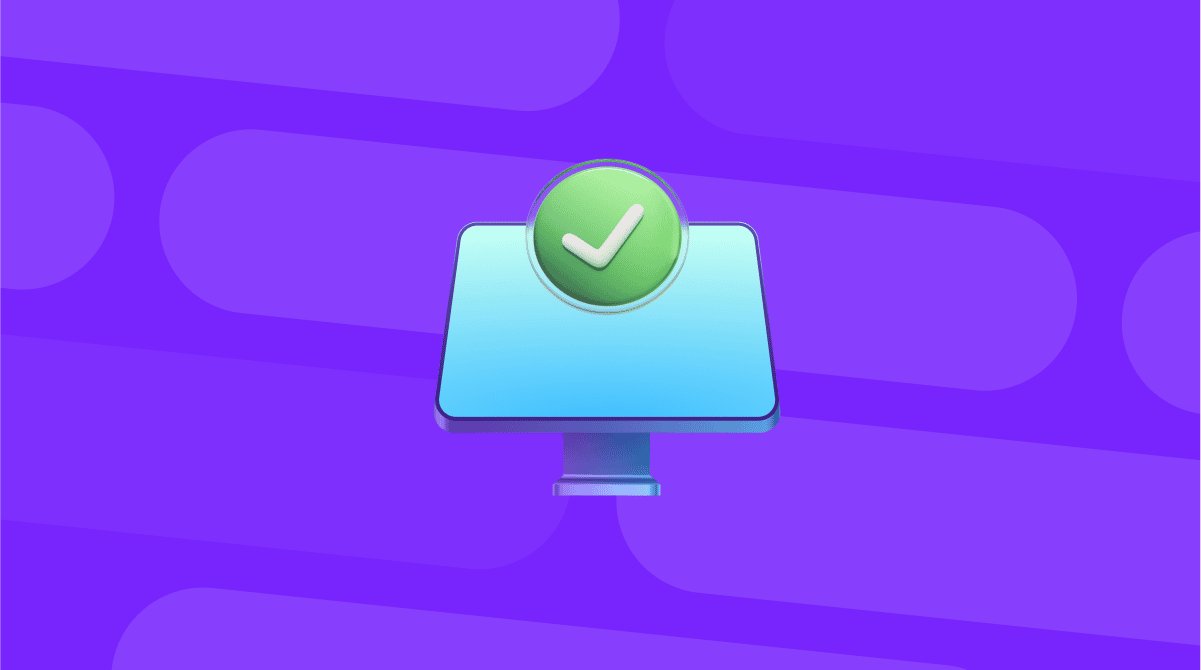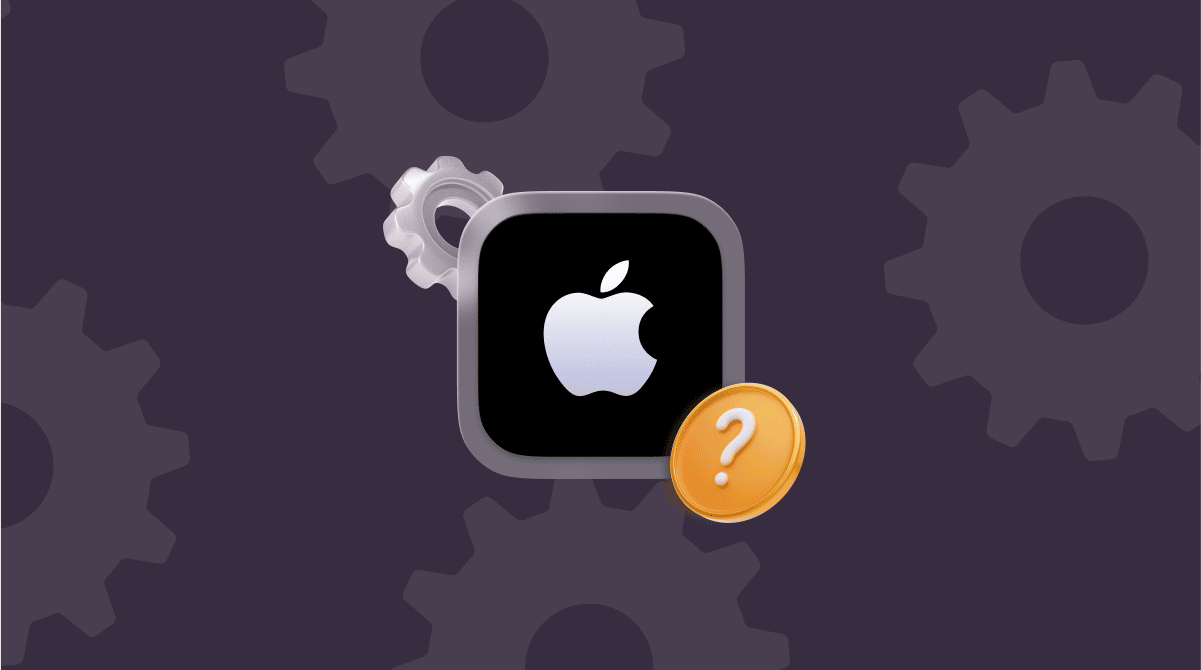According to 2024 Apple in the Enterprise Report by Kandji, Macs continue to outpace Windows computers in the workplace. 77% of IT stakeholders interviewed for the report agreed that it is because Apple devices are safer and easier to secure, and 58% of respondents mentioned that switching to Apple has improved security.
Nevertheless, Macs are not completely immune to threats, and one of the main risks businesses face is ransomware present in 44% of data breaches, according to Verizon. Luckily, you can protect your data, and that is where Data Loss Prevention (DLP) comes into play. Keep on reading and you’ll learn everything there is to know about DLP for Mac, why it matters, and what to consider when choosing tools.
What is DLP and why businesses use it
Data Loss Prevention (DLP) is a cybersecurity practice focusing on preventing data breaches as well as unauthorized access to data.
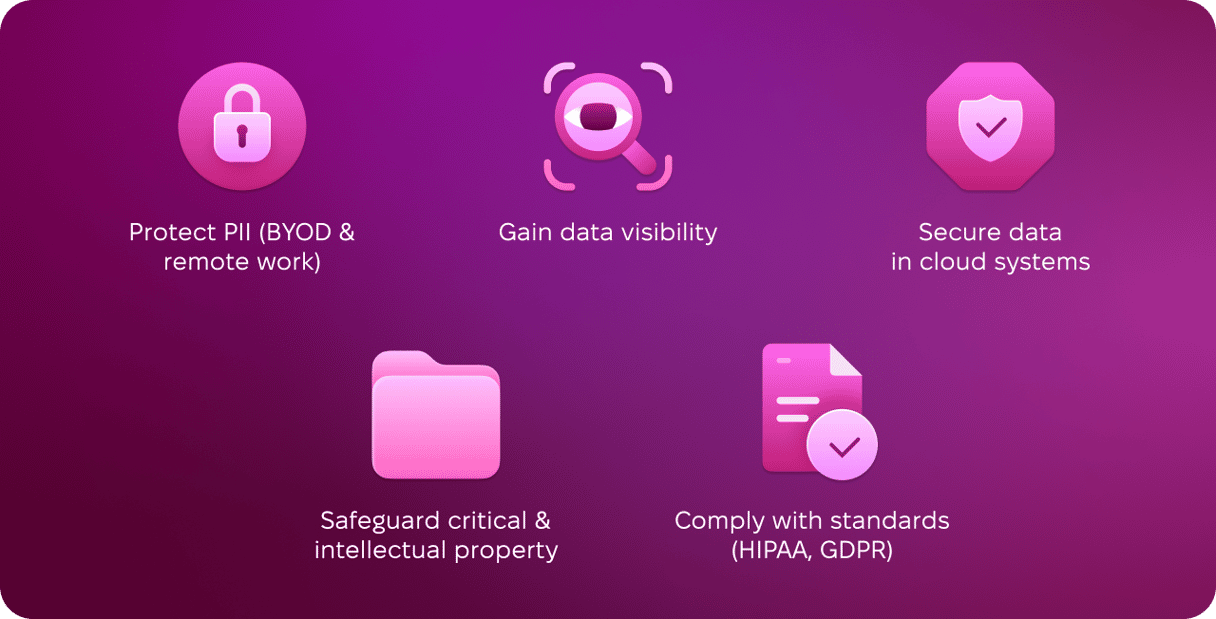
Companies use DLP to:
🔐 Ensure that Personally Identifiable Information (PII) is properly protected, especially when BYOD policies are in place and remote or hybrid work is allowed
📊 Achieve data visibility
⚙️ Protect data on remote cloud systems
💻 Protect critical property, including intellectual property
📖 Comply with data protection standards and regulations like HIPAA or GDPR
Why DPL matters
First off, DLP tools help prevent data leakage and loss. Verizon’s 2025 Data Breach Investigations Report states that 30% of all data breaches are caused by third-party involvement. Having DLP tools may help prevent such breaches.
Even if a breach occurs, adopting DLP device control can help reduce breach cost. According to IBM, the global average cost of a data breach is $4.9M (as of 2024), and if you have proper security measures in place, it can be cut by $2.2M.
In addition to financial losses, it may also help avoid reputational risks. In their 2024 Cost of a Data Breach Report, IBM stated that insider attacks accounted for 7% of all data breach incidents, but they were the most expensive ones in terms of reputational damage and losing customers.
Finally, DLP can help remediate device vulnerabilities and minimize the risks associated with human error. Why care? Because IT failures and human error cause 55% of all data breaches, as reported by IBM.
DLP components
DLP is not just one tool; instead, it is a multidimensional strategy. Here are some essential elements to include:
- Data identification: have a clear understanding of what types of data your organization works with (personal identifiable information, intellectual property, and financial data) and where it is stored.
- Data classification: identify which data is sensitive (critical for the business) and which can be shared with the public
- Monitoring and enforcement: develop and implement DLP policies (including DLP device control) and determine channels through which different types of data can be shared
- Ongoing employee training and guidance on how to protect critical data: you can use tools like KnowBe4 to educate employees and simulate attacks
Does macOS have built-in tools for DLP?
Macs are indeed more secure than Windows computers because they have built-in tools for DLP:
📌 FileVault encryption: protects data from unauthorized access by encrypting the entire disk
📌 Gatekeeper and app notarization: prevents users from running apps not verified by Apple
📌 XProtect: serves as a basic malware protection and removal instrument
📌 Time Machine: automates backups, helping restore data in case of data loss or system failures
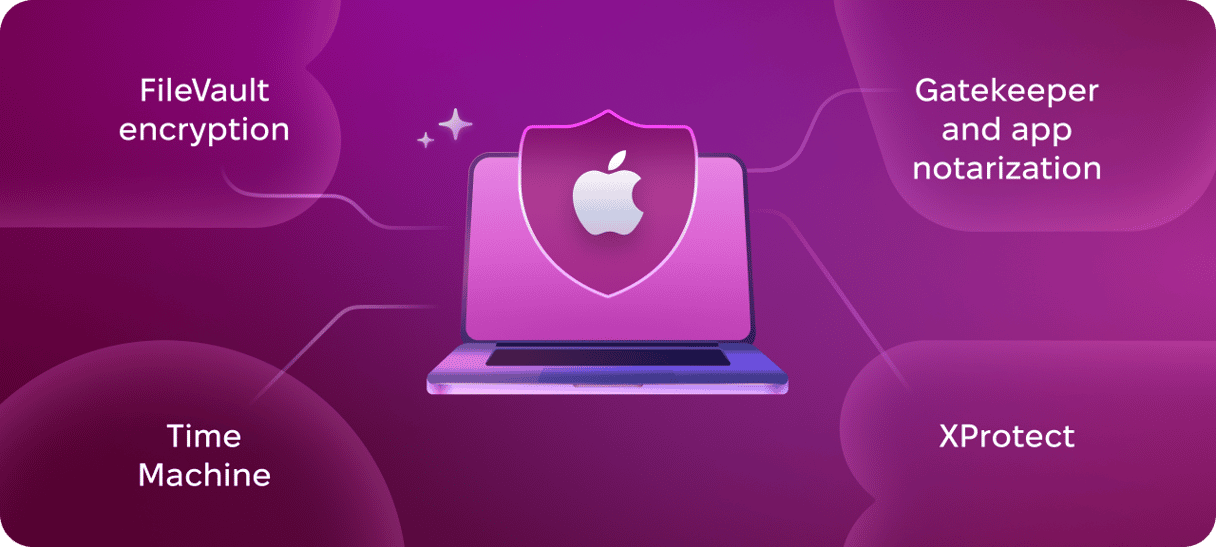
Effective as they are, they do not track user behavior and can serve for basic protection only. For a more comprehensive data loss prevention, you should invest in a multidimensional DLP strategy and have macOS built-in tools work together with an MDM solution, antimalware apps, and endpoint DLP software. Keep on reading to learn what to keep in mind while developing this strategy.
DLP best practices
1. Safeguard data in different locations
According to Verizon, 40% of data breaches in 2024 involved data stored across multiple environments, so it is crucial to protect different locations: networks, endpoints, and cloud storage. Have backups of critical data and ensure their integrity before restoring.
2. Invest in automation and strengthen it with AI
IBM reported that applying AI and automation reduces the cost of a potential data breach by almost 50%. However, only 24% of Gen AI initiatives are secured, so choose wisely. Also, protect sensitive AI training data.
3. Have strict network security policies
Have tools for distinguishing between legitimate and malicious user behavior on your network. Monitor data as it moves through the channels (some DLP tools allow that), integrate encryption for data protection, and have other network security tools like firewalls, web proxies, and intrusion detection systems.
4. Invest in a third-party data leakage protection Mac solution
Third-party tools enhance built-in macOS DLP capabilities. They offer more advanced tools for data encryption and malware protection and come with real-time monitoring features.
5. Enforce relevant endpoint policies
Because data loss can be caused by human error, make sure that users follow basic precautions like using strong passwords, installing timely software updates, practicing safe online behaviors, and connecting to organization’s VPN when using corporate Macs. Ideally, enforce these policies by having proper patch management practices and training employees on what to do and what to avoid.
How to choose endpoint DLP for Mac
When choosing an endpoint DLP solution for Mac, answer these questions:
💡 Does it analyze data network weaknesses? DLP software should track potential network-related threats to data, and protocols in place should minimize intentional bypassing.
💡 Does it safeguard data across different locations? If you use multiple devices, it should cover not only Macs but also other mobile devices and desktop computers, the cloud, and corporate networks.
💡 Is it a full-featured DLP solution? An effective DLP tool should not only protect your Mac fleet from malware but also offer other monitoring solutions (e.g., compliance reports and patch management tools).
💡 How much user experience and involvement is needed? Setting up DLP software usually requires expertise, but what about further maintenance? Choose one that can be maintained remotely and look for both automation and extensive customization capabilities.
💡 How does it affect the performance of your Mac fleet? Ideally, it should silently run in the background, not eating up too many resources and not distracting a user.
Must-have features for macOS
✅ Modern OS Architectural implementation that is in line with Apple’s currently recommended developer methods.
✅ Visibility into both file and browser-based events that ensures monitoring how users interact with specific data types on their Macs and online.
✅ Real-time remediation that enforces policies (both online and offline) and notifies an admin of their violation.
Here are some popular DLP tools for Mac:
- Symantec DLP: provides control over data, monitors suspicious user behaviors and policy violations, and helps identify malicious users. Best for enterprise users.
- McAfee Total Protection DLP: offers multidimensional data protection (on the network, at the endpoints, and within the cloud), controls data transmissions that violate policies, and gives visibility of user behavior. Best for small and large businesses.
- Endpoint Protector by CoSoSys: allows to monitor and protect sensitive data, ensure regulatory compliance, inspect content, and scan applications and removable devices. Best for midsized businesses.
DLP for Macs isn’t about locking everything down; instead, it is about building multilayered and multidimensional defences balancing protection and productivity. Whether you’re running a 15-person SMM agency or a 10,000-seat enterprise, it is an extra layer to your organization’s security that may help avoid financial and reputational loss. And you can choose proper tools and scale them as your business grows.


